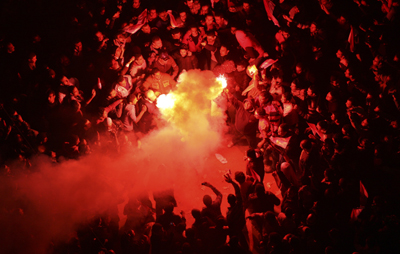Few cases of sexual assault against journalists have ever been documented, a product of powerful cultural and professional stigmas. But now dozens of journalists are coming forward to say they have been sexually abused in the course of their work. A CPJ special report by Lauren Wolfe
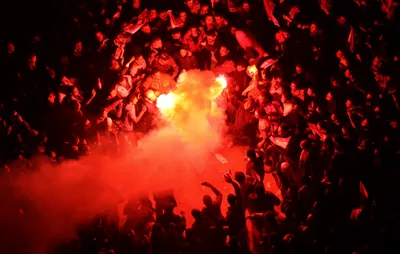
Published June 7, 2011
NEW YORK
Nine years passed before Colombian journalist Jineth Bedoya spoke publicly about the brutal rape she endured while reporting on right-wing paramilitaries in May 2000. On assignment for the Bogotá daily El Espectador, Bedoya was abducted, bound, blindfolded, and taken to a house in the central city of Villavicencio, where she was savagely beaten and raped by multiple attackers.
More on This Issue
• CPJ Security Guide:
New section on sexual abuse
• CPJ Blog: Adjusting
to evolving threats
In Other Languages
• Español
• Français
Multimedia
• Audio Report:
Breaking the Silence
In Print
• Download the pdf
Since she began speaking out, Bedoya said, she has encountered a number of journalists—from Colombia to the United States to Europe—who had been raped or sexually abused but chose to stay quiet because of cultural and professional stigmas. By making her own case more visible, Bedoya said, she hopes to encourage these journalists to “denounce what’s happened to them and be able to ask for justice.”
The 2000 attack on Bedoya was notable in one respect: The assault was reported to authorities and CPJ documented it at the time, making it one of the relatively few recorded cases of sexual assault against a journalist.
Now, the vicious sexual assault of CBS correspondent Lara Logan in Cairo in February has brought the issue into sharp focus, prompting journalists worldwide to begin speaking out in numbers previously unknown. Over the past four months, CPJ has interviewed more than four dozen journalists who have undergone varying degrees of sexual violence—from rape by multiple attackers to aggressive groping—either in retaliation for their work or during the course of their reporting. They include 27 local journalists, from top editors to beat reporters, working in regions from the Middle East to South Asia, Africa to the Americas. Five described being brutally raped, while others reported various levels of sexual assault, aggressive physical harassment, and threats of sexual violence. A similar range of experience was reported by 25 international journalists; two reported being raped, five others described serious sexual violation—ranging from violent, sexual touching, to penetration by hands—and 22 said they had been groped multiple times. Most of the reported attacks occurred within the past five years, although a small number of cases date back as far as two decades.
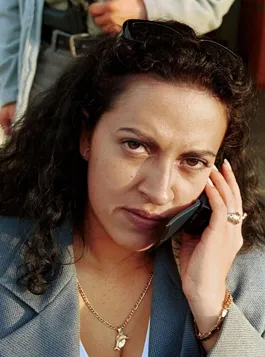
Many of the assaults fall into three general types: targeted sexual violation of specific journalists, often in reprisal for their work; mob-related sexual violence against journalists covering public events; and sexual abuse of journalists in detention or captivity. Although women constitute the large majority of victims overall, male journalists have also been victimized, most often while in captivity or detention.
Most of the individuals interviewed by CPJ have not previously disclosed their experiences beyond speaking with friends or family. Journalists from all over the world said they largely kept assaults to themselves because of broad cultural stigmas and a lack of faith that authorities would act upon their complaints. But time and again, journalists also said that professional considerations played an important role; many were reluctant to disclose an assault to their editors for fear they would be perceived as vulnerable and be denied future assignments.
As a result, little documentation exists on the topic of sexual aggression against journalists. While CPJ and other international groups have reported individual instances of sexual assault over the years, the kind of methodological research that charts other anti-press attacks, such as murders and imprisonments, has yet to be conducted.
Whatever level of sexual aggression exists, advocates say, it raises compelling press freedom and security concerns. “If we want to make journalists safe and effective, make it possible for them to do their job safely and effectively, we can only do that by confronting honestly the real risks that are present,” said Bruce Shapiro, executive director of the Dart Center for Journalism & Trauma, which provides support and guidance in the coverage of traumatic events. “It requires an honest assessment by news organizations and the profession. We’re talking, in fact, about strengthening the profession.”
To solicit reports for this account, CPJ contacted 15 international and local journalist groups throughout the world and asked that they put affected colleagues in touch with us. CPJ also contacted more than 20 individual journalists worldwide, asking that they do the same. The information gathered for this report, while giving insight into a largely unexplored area of the profession, will also provide a foundation for a long-range survey that CPJ will undertake in the coming year.
In conjunction with the publication of this report, CPJ is also publishing an addendum to its existing security guide, focusing on ways to minimize the risk of sexual assault.
Attacks of all types, occurring across the world
Jenny Nordberg, a New York-based Swedish correspondent, was in Pakistan in October 2007 to cover the return of Benazir Bhutto, the exiled former prime minister who would be assassinated two months later. During a chaotic procession in Karachi that day, Nordberg became separated from her colleagues and surrounded by a crowd of men who sexually assaulted her. She was freed only after people in a passing truck pulled her to safety. She told CPJ why she chose not to talk about it until now:
“It’s embarrassing, and you feel like an idiot saying anything, especially when you are reporting on much, much greater horrors,” Nordberg wrote to CPJ in February. “But it still stays with you. I did not tell the editors for fear of losing assignments. That was definitely part of it. And I just did not want them to think of me as a girl. Especially when I am trying to be equal to, and better than, the boys. I may have told a female editor though, had I had one.”
Without support, Nordberg said, she turned a critical eye on herself.
“I did that whole thing of, ‘Um, I was an idiot not to have proper backup, I was maybe not wearing the right thing, etcetera.’ Today, when I am older and a little wiser, I know that crowds or riots are incredibly dangerous regardless of what you wear and even if you’re surrounded by ex-paratroopers. But I didn’t know then, and I was perfectly appropriately dressed, too, by the way. I also did not tell [editors] for fear that they may have any of those same thoughts, ‘Oh, maybe she invited that sort of behavior.’”
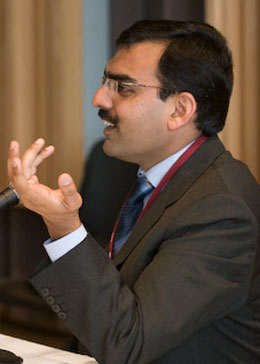
Male journalists have also been targeted, typically in situations of captivity or detention. Umar Cheema, a prominent political reporter for Pakistan’s largest English-language newspaper, The News, told CPJ that he was abducted, tortured, and sexually assaulted in an Islamabad suburb in September 2010. “As I was stripped naked and being tortured on the back with my head down totally blindfolded, the ringleader directed one of his fellows to molest me,” Cheema wrote in an email to CPJ, describing how he was sodomized with a wooden pole. “Ten minutes after I was free, I started thinking about what I should do,” he said. “The decision was I had to speak up.” Speaking out, he said, “has made me stronger and made my enemies more cowardly. Their efforts to intimidate me backfired.” Cheema has publicly blamed Pakistan’s powerful Inter-Services Intelligence Directorate for the abduction and subsequent abuse, an assertion the government denies.
Other male media workers have been victimized in captivity, although they face powerful disincentives to speaking out publicly. One international reporter told CPJ that a male Iraqi staff member in the journalist’s Baghdad bureau was kidnapped and repeatedly raped because he worked for a Western news outlet. But the Iraqi staffer felt unable to report the matter to police or speak publicly for fear of being shamed, said the international reporter, who spoke on condition of anonymity to protect the staffer’s identity.
A number of journalists have been sexually assaulted in official detention. Egyptian blogger Mohammed al-Sharkawi was sodomized in May 2006, when he was 24. His lawyer, Gamal Eid, said no one has been prosecuted for the abuse. CPJ also received secondhand reports that four Iranian journalists, two male and two female, were raped in custody. The use of rape to humiliate and control detainees in Iranian prisons has been widely documented.
Sexual aggression on the job takes other forms as well. The most numerous complaints involve the groping of female journalists while they are on assignment, often covering unruly public events such as protests or celebrations. Some journalists said they have been subjected to aggressive sexual harassment, while others reported receiving threats of sexual violence. In some cases, the reported perpetrator was a support staffer or other colleague.
One Iranian journalist, who spoke on condition of anonymity through a colleague, said she has experienced constant, unwanted advances from public officials. In one instance, a man placed his hand on her thigh during an interview. “It’s clearly intended as intimidation and harassment,” the woman said through the colleague. “In this part of the world, it’s difficult to be a journalist. Because you’re a woman, there’s a kind of additional lever they can apply. You have a special vulnerability because you’re both a journalist and a woman.”
Grace Wattera, a writer for the newsweekly Fraternite Matin in Ivory Coast, said harassment is so constant that it interferes with her work. Because she is a woman, she said, “people in the government think they can use me how they want.” Certain officials require her to sign in for press conferences. After her name and phone number are recorded on sign-in sheets, Wattera said, she receives sexually harassing phone calls for days at a time.
A number of journalists reported receiving threats of rape. Aissatou Sadjo Camara, a reporter for Guinean radio station Cherie FM, described a chilling episode that occurred on September 28, 2009, when a peaceful anti-government protest turned violent at a Conakry stadium. Reporting from the scene, Camara was on the phone with her station director, who was also in the stadium, when the line cut out.
Camara called back. A man picked up the phone, and identified himself as a soldier. “I’m going to change into civilian clothes and come rape you,” said the man, who had beaten her boss and seized his phone. “We will come and rape you and we will destroy your family.” The man continued to call for 10 consecutive days. Camara took leave from work, with the support of her station. She changed her phone number and, though she considered giving up journalism, she eventually returned to work.
In interview after interview, female journalists described groping as a near-constant form of abuse in many countries. “If you can find a single female journalist who hasn’t been groped in a crowd, I will be stunned,” said reporter Gretchen Peters, who has covered Pakistan and Afghanistan for more than a decade, first for The Associated Press and later for ABC News. One journalist described it as a stomachache—something you have to tolerate on certain international postings.
But when crowds turn lawless, the ache can be malignant. Heidi Levine, an American photojournalist for Paris-based Sipa Press, was in Cairo’s Tahrir Square on the night Logan was assaulted, and she describes the scene as a kind of carnival-esque mayhem, the likes of which she had never seen before. “It was terrible to make it through the square that night,” she said. “The violence unleashed gives permission for people to behave how they want to behave.”
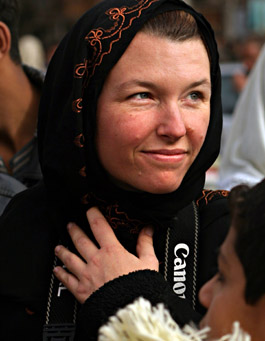
Others described similarly malevolent crowd scenes. “The most I was ever groped was at Arafat’s funeral,” freelance photojournalist Stephanie Sinclair said. “I got groped a thousand times. It was horrifying. Everyone said it was the hardest thing they ever covered. It was awful to be groped like that, on every part of my body.”
Kate Brooks, a photographer based in Turkey who freelances for The New Yorker, The Wall Street Journal and others, said a man grabbed her crotch from behind as she was photographing the scene of a suicide bombing in Afghanistan. Brooks said she usually tolerates groping—“it’s the way things are in the field”—but she found that episode as inexplicable as it was disturbing. Can it possibly be sexual, she asked, in such circumstances?
For female international journalists, risk can come not only from strangers on the street but from the men who guard their lodging, drive their cars, or help arrange appointments. One journalist who spoke on condition of anonymity told CPJ that her fixer had harassed and sexually assaulted her. Another said she often slept with a knife under her pillow while in a foreign bureau’s house out of fear a guard might “take his chances.”
For local journalists, threats can also come from within. An Afghan reporter told CPJ that a co-worker sexually assaulted and held her at gunpoint for hours, but cultural stigmas prevented her from reporting the attack. “Women don’t report sexual attacks most of the time because family honor is very important,” said the journalist, who spoke on condition of anonymity due to fear of reprisal. “If something like that gets reported, the girl herself will be blamed by the family and everyone around her.”
A culture of silence
There is a female reporter in West Africa who wants CPJ to tell her story. Before now, she has told only one person, her doctor, what happened. She recounted being beaten and gang-raped by members of an armed rebel group while on assignment. She then witnessed a superior officer shoot one of her attackers after he had come upon the scene. But she chose not to tell her editor for fear it would harm her own reputation. She could not report the attack to police, she believed, because they would not take it seriously, perhaps even mock her or solicit a bribe. She felt empty, terrified, and traumatized. Years later, she still does. She spoke only on condition that her name and other identifying details, including her country, be withheld.
The documentation of sexual assaults against journalists has been scarce. Rodney Pinder, head of the International News Safety Institute, a nonprofit that provides advice and assistance to journalists working in dangerous environments, said his organization encountered considerable reluctance among female journalists when it conducted a 2005 survey of security issues facing women in the profession. “They didn’t want to encourage a situation in which male editors assigning stories might be reluctant to send a woman out in field,” Pinder said. “They felt that it might affect them negatively if their employers or their assignment editors felt that they had to be given special care, attention, protection.”
Sexual assault is “the silencing crime,” said Elana Newman, head of research for the Dart Center. “I think it’s an underreported experience probably for both men and women journalists,” Newman said. “I think there’s still a stigma associated with sexual assault. The [journalism] field is incredibly competitive. There are so many difficulties; people are not apt to want to report any additional stressors in the field because of the competitiveness and the stigma related to any kind of assault on the body.”
ProPublica’s Kim Barker described the women attracted to international journalism as “aggressive, assertive, strong” with a “constant desire to prove ourselves, to show that we can play in that environment.” Like most of the female foreign correspondents CPJ interviewed, she talked about experiencing recurring, low-level sexual abuse in the field. But Barker told CPJ that international journalists generally don’t want to “cry sexual assault. … I think it’s difficult for us to talk about this stuff because we don’t want to look like we’re weak, or whiners. The tendency of bosses is to want someone who knows what to do and doesn’t need hand-holding. The fear would be that they would just simply pull you from the assignment.”
Barbara Crossette, former U.N. bureau chief for The New York Times, said media outlets may not want to hear about sexual assaults overseas for another reason: “If you talk about it a lot, it reflects badly on the [host] country and the people, and sometimes editors or producers at media organizations don’t want to have trouble with the government.”
One U.S. journalist recounted an Iraqi government minder trying to force himself on her in a hotel room and then sexually harassing her afterward. What was worse, she said, was her media outlet’s response. A female manager treated her “with hostility for jeopardizing a story instead of giving caring advice and support. … I was crushed by the response of the people I worked with and trusted,” said the journalist, who recounted the story on condition of anonymity. The news outlet eventually pulled her off the assignment.
Many local journalists face intense cultural barriers to reporting sexual abuse. Mehmal Sarfaz, joint general secretary of South Asian Women in Media, said female journalists fear they will shame their families and besmirch their own reputations by reporting an assault to authorities or their employers. And, she said, “they know nothing will come out of it.”
Deborah Nyangulu-Chipofya, secretary-general of the Media Institute of Southern Africa in Malawi, said that in her country, threats of any nature are usually reported to editors. Police, on the other hand, are a different story. They “usually say they will investigate the matter, but I can’t recall any case that has ever reached prosecution,” she said. The perception of official indifference to assault sows self-censorship among journalists, Nyangulu-Chipofya said. “Sometimes reporters have failed to ask the president questions for fear of what his party supporters might do.”
A threat to press freedom
“Sexual assault and rape are not about sex,” said Columbia University journalism professor Helen Benedict, who has written extensively on rape and the military. “It’s about humiliation and degradation and power.”
And so it is with the press. Sexual attacks against journalists have the effect of silencing the messenger and blocking the dissemination of news and information. In the same manner as other types of attacks, sexual aggression is a direct assault on the internationally guaranteed rights to freedom of expression and access to information. “Sexual assault ranks in my mind with beatings, with torture, with imprisonments, with killings,” said Pinder of the news safety institute.
But if silence has been the practice until now, the assault against Logan may have accelerated changes in attitudes across the profession. In March, New York Times photojournalist Lynsey Addario disclosed the sexual abuse she endured while abducted with colleagues in Libya. Her goal was to cast shame where it was deserved: “I’ve worked long enough in the Muslim world to know that it is grossly, grossly embarrassing to hear that men in your country have been touching women who are not their wives. I knew it would shame them, and that’s why I’ve come forward.” (Times colleague Stephen Farrell told CPJ that he, too, was sexually abused in one instance while being held captive with Addario in Libya.)
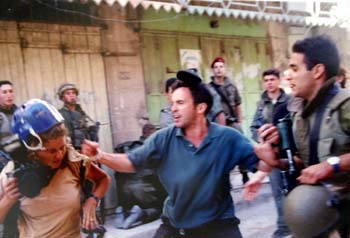
As CPJ was first gathering contacts for this report, photojournalist Levine called several colleagues. Levine was surprised, she said, that they all wanted to talk about what they’d been through. What happened to Logan, a CPJ board member, changed their thinking. “It was very brave of her to talk about it publicly,” Levine said. “She gave us all a lot of courage to speak openly and frankly because before we didn’t. Definitely things have changed from the past.”
Changes are needed in newsrooms as well. David Verdi, NBC’s vice president for newsgathering, said the network has had “ongoing, animated, and vibrant” discussions about putting its people in harm’s way. “Is a woman more vulnerable because rape is a weapon of war?” he asked. “It always comes down to the same answer: It’s a voluntary assignment and we’re going to openly discuss all of the risks. We’re about mitigating risks, and we’re about complete and total transparency. In the end, we let our employees make the final decision about putting themselves into harm’s way.” He said two network journalists have been sexually assaulted in the field, although he declined to provide details. Verdi said both journalists were offered medical and psychological counseling, although they chose not to go to the police.
NBC is implementing a new training course for journalists entering hostile environments, Verdi said, and it will address the risks of sexual assault. The course will “train people to take preventative steps to lessen your chance of being sexually assaulted,” Verdi said. “It’s going to deal with every culture from the American workplace to a checkpoint in the Libyan desert.” Other news organizations said they, too, have incorporated the threat of sexual assault into their security training.
Advocacy organizations such as CPJ have an obligation as well. While murders, imprisonments, instances of censorship, and other forms of assaults are regularly documented by CPJ and other press groups worldwide, sexual violence has remained a dark, largely unexplored corner. By documenting sexual abuse, CPJ and other press groups not only enable journalists to understand the risk, they can define the issue as a threat to free expression, seek justice in individual cases, and pursue systemic reforms.
The Colombian journalist Bedoya stayed quiet for many years. But when Oxfam International, a nonprofit that seeks to combat poverty and injustice, contacted her about its study of sexual violence in Colombia, Bedoya realized she could give voice to others by speaking publicly about her own experience. Doing so has also rekindled her desire for justice.
Colombian authorities never prosecuted Bedoya’s attackers. Now, 11 years after the assault, Bedoya is seeking to bring a case to the Inter-American Commission on Human Rights on grounds that the Colombian government failed in its duty to seek justice. The time for silence is over.
Lauren Wolfe is senior editor for the Committee to Protect Journalists. She has written previously about the issue of sexual violence against journalists on the CPJ Blog. CPJ gratefully acknowledges the support of the International Women’s Media Foundation in the preparation of this report.
